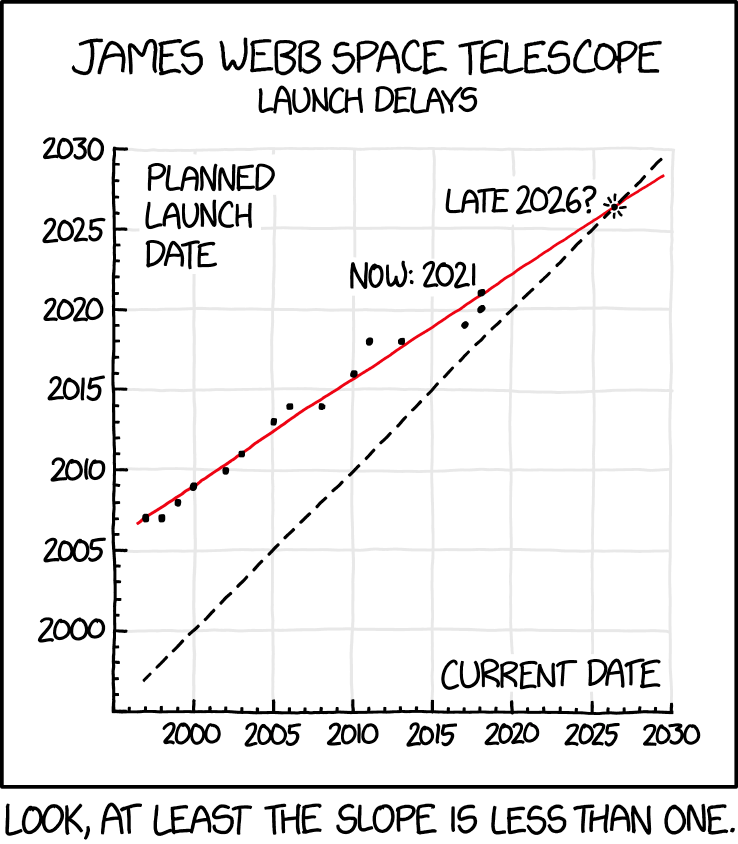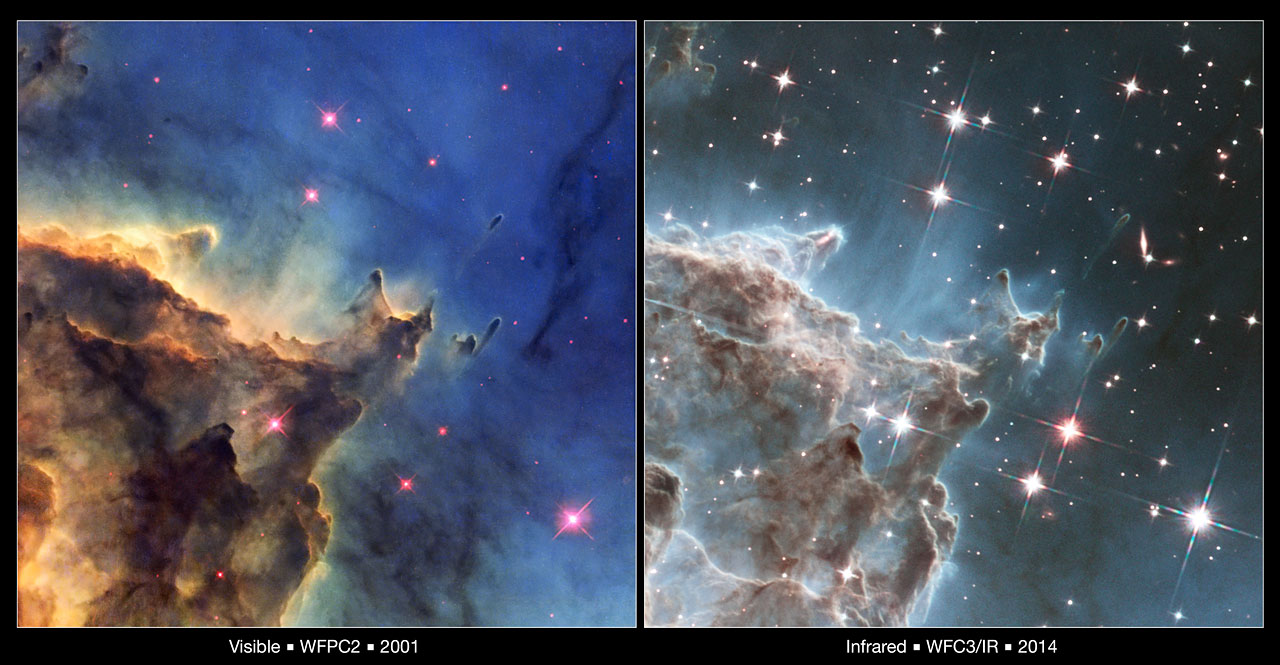Webb Space Telescope Launches!

Webb Telescope Launch
This project was initially begun in 1996 and planned to launch in 2007 with a budget of $500 million. That launch date would be delayed at least 15 times and the total budget is now nearly $10 billion.

Credit: XKCD
While that’s certainly frustrating as a taxpayer, one thing the extra 14 years has bought us is massive strides forward in technology. Think of the first iPhone, “launched” in 2007 compared to the state-of-the-art smart phones today.
Beyond the technological marvels heading out to space, this is an engineering masterpiece and some very cool science is at play. The mirror is really a honeycomb shape made of 18 hexagonal mirrors. Many people think telescopes are about the magnification power and while that is important, far more crucial is the ability to gather light. Aperture is king! The surface area of the Webb telescope is 6.25 times that of the Hubble. Not only does this allow for fainter objects to be detectable, but the resolution is going to be significantly better. I’ve heard that it will actually be able to see the stars BEHIND some globular clusters!
It is now on its journey out to what’s known as L2. In orbital dynamics Lagrange points are places where gravity tends to keep things in place. L2 is a point about 1 percent of the distance to the sun away from Earth in the direction of the moon, about four times further away than the moon! There, the normal gravitational pull to the Earth and moon balance out the centrifugal force caused by the orbit. The main reason for placing it there is that it allows NASA to avoid the heat of the sun. If you’ve ever bought a telescope, you’ve seen the warnings to never, ever, point it at the sun without a proper filter. Imagine the effect of pointing a 6.5 meter lens at the Sun! The solar shield is now drawing power to propel the telescope to L2, but it will also protect the scientific instruments from the heat of the Sun. As someone at NASA put it, you can boil water on one side of the telescope and freeze nitrogen on the other side!
So what comes next? Well, we have about six months to wait before the first images come rolling in. The gigantic mirror assembly was folded up for launch and while it travels to L2, it will start to unfold. I watched a fascinating talk about one of the things that will come next, namely collimation. Anyone who’s owned a Newtonian reflector knows how important this is. Light travels to a mirror that has a special shape designed to focus the light on a secondary mirror and focus at the eyepiece. Imagine trying to do that with a telescope that unfolds and just blasted out of Earth’s atmosphere atop a rocket! Those who remember Hubble’s launch will recall that very small imperfections in the shape of the mirror caused the first images to look quite terrible.

Credit: NASA
The image on the left is one of the first from Hubble. While NASA was able to account for the problem both on the ground and with several servicing missions, that is impossible with the Webb telescope. Remember, it’s going out further than the moon so a manned mission is out of the question. Extraordinary precision went into the making the individual mirrors, but the even harder part is getting them to work in alignment with each other. I saw a fascinating talk at a local astronomy club about that process. In short, small actuators will make microscopic adjustments to each mirror until all 18 are aligned on the same subject.
Sadly, this is not likely to last as long as the Hubble, which is still operating and will continue to do so for another decade. The goal for the Webb telescope is five years, although the mission has enough fuel to last for ten. Oddly, that means, the Hubble might actually outlive its “successor”!
We should also be prepared for completely different kinds of images than what came from the Hubble.

Credit: Hubble and ESA
Hubble’s instruments are capable of observing the spectrum from ultraviolet to infrared while Webb can observe from the green part of visible light to deep into the infrared. That means the images it takes are going to have a false color look. While this might seem disappointing, Hubble actually does something similar, and that’s also what has gone into many of the images I’ve taken. Nebulae are made up of various types of gas and are extremely bright along some wavelengths. Hydrogen Alpha is one of these, as well as Oxygen III and Sulfur II. On the plus side, almost nothing on Earth emits these wavelengths, so by designing filters that only let in a few nanometers of the spectrum around these wavelengths, we can photograph them from light polluted skies on Earth. However, Halpha and SII are both in the red part of the spectrum and OIII is in the green. This means combining the images as natural light leaves out the blue altogether. Hubble uses a special palette mapping SII to red, Halpha to green and OIII to blue, approximately. Think of it this way. As long as you properly distribute the colors around the 360 degrees of the color wheel, at some point, you get the most aesthetically pleasing images. This is even more complicated when you are shooting outside the visible spectrum, since those wavelengths, while emitting a lot of light, are not bound to a color. I saw another interesting talk by someone at STSCI about how they choose the colors. In this case, I believe they had two filters in the infrared spectrum, so rather than an RGB style image, they just had to pick points on opposite sides of the color wheel and spin until the best looking image popped up.
I’m looking forward to what the Webb telescope will be able to teach us as thousands of hours of science has already been scheduled. Thanks to all the nerds out there who worked tirelessly over the last 25 years on every aspect of this mission. What a great Christmas present!

Leave a Reply